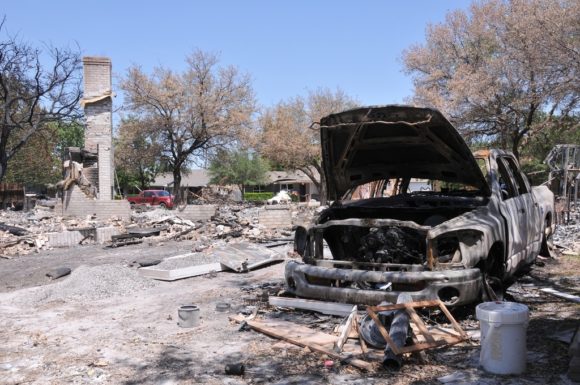Property/casualty losses arising from construction defects, earthquakes, hurricanes, floods, fires, industrial accidents, tornadoes or any number of other perils can strike at almost any time. When they do, the impacts to a business can be crippling, and managing the operational, financial and insurance recoveries can be a complex and often-daunting undertaking for any organization. Policyholders can position themselves for an efficient and successful insurance claim process by adhering to the following five guiding principles.
Be Prepared
Much of the groundwork for a successful claim outcome is established well before a loss occurs. The single most important step an organization can take to prepare for a loss is to have an insurance program in place that is aligned with its exposures and risk transfer objectives. Issues are likely to arise when there is a disconnect between the two. Sourcing appropriate insurance coverages is often easier said than done because business interests, risks and insurance products are constantly evolving, making it a challenge to keep everything in balance.
Enlisting the help of a knowledgeable insurance broker with relevant industry experience is a must, but even the best of brokers will only be able to secure coverage to address the exposures that he or she understands. Organizations that invest in the insurance placement process by soliciting input from across the organization (legal, finance, procurement and supply chain, for example) are equipped to identify the potential risk and exposures. Armed with a more complete understanding the potential exposure, a broker will be in a better position to recommend coverage options that satisfy the organization’s needs.
Additionally, timing can be of the essence when it comes to responding to a loss event, and having a disaster response plan in place can potentially have a big impact on the scope of loss.
Every organization should have a disaster response plan and the best plans are clear, concise and easily accessible to employees throughout the organization. At a minimum, a disaster response plan should include contact information for emergency management resources (fire department, gas company and property restoration company, for example) and provide guidelines for ensuring the safety of employees and customers, taking reasonable steps to mitigate the loss and notifying the risk manager and other key decision-makers within the organization of the loss.
Be Proactive
It is important for policyholders to understand that they own the claim and are responsible for driving the claims process. Insureds should strive to be proactive, not reactive, and should not rely on the insurance company’s adjusters to look out for the organization’s best interests.
It is the adjuster’s job to adjust the claim presented by the insured, not to assist in preparing it. The insured has the burden of proving and documenting the claim, and needs to establish early in the process that they are carefully and fully preparing a fair, credible claim for all losses they may be entitled to under their policies.
As appropriate, the policyholder should consider leveraging broker, forensic accounting and claims consulting resources to assist with analyzing, preparing and presenting the claim.
Be Coordinated
There are often many internal and external parties involved in the claims process, including adjusters, broker representatives, forensic accountants, engineering experts and others. That said, it may not always be clear whose interests the various constituents are representing.
Communication of incomplete or inaccurate information may lead to the formation of false expectations that can be difficult to overcome. It is essential for all members of the insured’s claim team to be coordinated in communicating with the insurance company’s claims teams.
This typically works best when the insured designates a senior-level manager to lead the claim. The team lead should be responsible for championing the collection and compilation of data required to develop and support the claim; controlling the flow of information to insurer, brokers, claim consultants and adjusters; and for coordinating internal communication of important claim information to the executive management team.
Be Strategic
The insured has an obligation to deal with insurers in good faith and respond to all reasonable requests in a timely manner. However, this does not mean that the insured should haphazardly rush to supply every piece of information the adjuster or forensic accountant requests. A deliberate approach to preparing the claim and responding to such requests is required.
It is common practice for adjusters and claim accountants to recycle boilerplate information requests that may include information that is completely irrelevant to a claim, wasting valuable time and resources. If the policyholder does not understand why certain data is being requested, they should ask for clarification. If the insured believes that certain information requests are overly burdensome, they should propose alternatives (sampling, for example) that might be acceptable to the adjuster.
Be Diligent
It is critical for the insured to maintain regular communication with the claim adjusters and insurers. Keeping the adjusters and insurers apprised of plans and restoration efforts will help to eliminate surprises and lead to a less contentious claims process.
Disputes are bound to occur during the adjustment process. The insured, however, should not be quick to let such disagreements derail settlement discussions. Instead, the insured should strive to resolve as many claim items as they can and table the disputed items for a narrowly focused final claim negotiation.
Every organization that experiences a loss will confront a unique set of issues. The principles outlined above are a general guide to help organizations navigate the claims adjustment process and promote a successful recovery and resolution of claims.
Was this article valuable?
Here are more articles you may enjoy.



 Suspects in Louvre Heist in Custody After Week-Long Manhunt
Suspects in Louvre Heist in Custody After Week-Long Manhunt  Progressive Now 4th Largest Global Insurer; RenRe Fastest Growing in ’24
Progressive Now 4th Largest Global Insurer; RenRe Fastest Growing in ’24  Brown & Brown Reports Strong Q3 Revenue Growth of 35.4%
Brown & Brown Reports Strong Q3 Revenue Growth of 35.4%  CyberCube: Insured Loss Estimate From AWS Outage Likely About $40M
CyberCube: Insured Loss Estimate From AWS Outage Likely About $40M 

